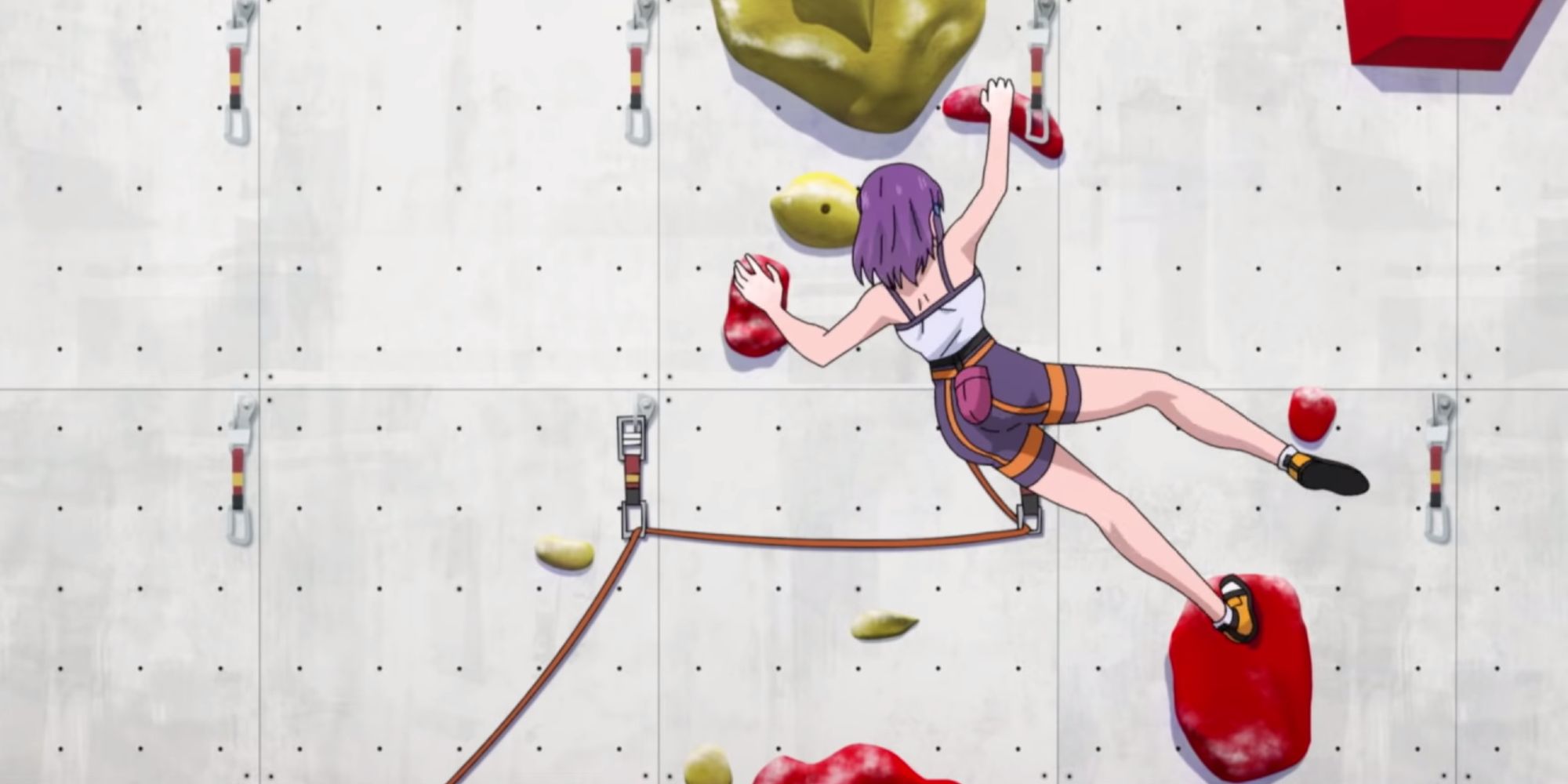Iwa Kakeru! Sport Climbing Girls has made a splash in social media, catering to the fit moe girls genre. Rock climbing as a sport has been trending in the U.S and has been a huge hit in Japan, too. In fact, it was so popular that the 2020 Tokyo Olympics planned to have sport climbing as an event for the very first time in the history of the Summer Olympics. Although sport climbing involves a number of different types of climbing, currently, one of the most popular forms in both Japan and America is bouldering.
Bouldering, Explained
Bouldering is a sport that can involve climbing outdoors, or at a rock wall indoors in a gym. Outdoor climbing is considered far more difficult since it’s necessary to bring equipment and a spotter to climb safely; weather and rock conditions also vary by time and location. Since Iwa Kakeru! Sport Climbing Girls seems to focus mostly on indoor climbing, let’s delve into some of the unique qualities of climbing in a gym.
Generally speaking, gym rock walls are around 15 to 16 feet, and the floor space directly underneath and surrounding the rock walls are covered in thick, bouncy padding. Unlike outdoor routes, indoor climbing involves fixed routes set by employees and are labeled by difficulty. These can rotate and change depending on the week or month, allowing climbers to experience something new. In addition, the walls and holds are, for the most part, made of the same materials at every gym.
A Rock Puzzle
In the trailer of Iwa Kakeru! Sport Climbing Girls, the gamer girl protagonist Konomi Kasahara exclaims that climbing is like solving a rock puzzle. While it’s easy to dismiss this as another anime exaggeration, she’s actually correct. First, because routes in a gym are color-coded, it’s common to plan your method of attack beforehand. This is called mapping or reading the route. In addition, the holds attached to the wall have various recognizable shapes that designate how you’re supposed to use them. This makes it possible to map out how you will move up the wall, much like a puzzle game.
For context, let’s take a look at a few common holds. A jug is a beginner-friendly hold that’s great for grabbing on with your whole hand, as it has a deep lip you can dig your finger into. On the other hand, slopers are round and flat, requiring a little more finesse with palming them, and pockets and crimps are so small that you need to pinch them or hang from them with the tips of your fingers. Slopers and tiny holds are also sometimes better for standing on, as easier routes tend to avoid using these difficult holds for beginners who haven’t built up the calluses or grip strength to use them comfortably. Just by looking at these holds, climbers can predict how they should position themselves to use each one to the fullest.
Fatal Flaws
As much as Iwa Kakeru! Sport Climbing Girls seems to be getting parts of the sport right, it also overlooks some major points. One visible mistake in the trailer is an illustration of back-clipping, shown above. While it’s small and easy to miss, back-clipping is a common mistake with lead climbing that has disastrous results. If a climber is clipped in incorrectly, the twisted rope can unclip itself in the momentum of a fall, causing the climber to sustain injuries from a greater height, and possibly even swing into the wall with greater momentum.
The first chapter of the manga also has Konomi climbing the better part of a 5.11 route on her very first day, something that is unrealistic for a self-proclaimed shut-in to be able to accomplish; beginner routes range from 5.7 to 5.9, depending on the gym. While a tall and athletic beginner may have an advantage, even with great sense and flexibility, someone without the proper physical conditioning would have much more trouble trying to force their way up the difficulty gradient. In reality, even if she were able to accomplish this feat, she would most likely suffer injuries from muscle strain soon afterward.
A final, personal complaint that some gym climbers may have against the depiction of the climbing club in this story is that it introduces a rival right off the bat who tries to make the club competitive and exclusive. While this is understandable from a story standpoint, climbing, in general, is a sport that welcomes newcomers: total strangers will cheer for each other in gyms, give tips on difficult routes, and offer to be climbing partners. As long as the anime ultimately manages to convey that sense of camaraderie and warmth, it won’t stray too far from the mark, though.




